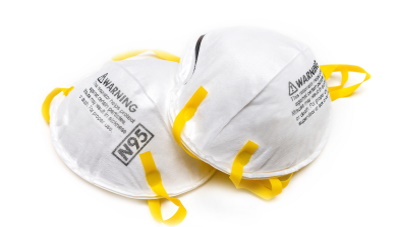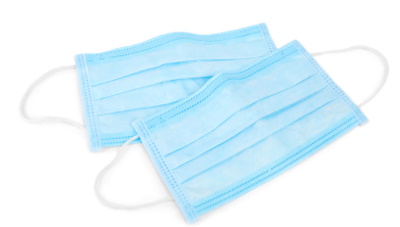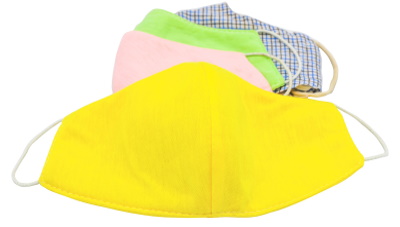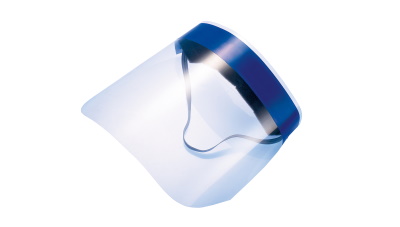Most Effective Masks
Masks are important for preventing the spread of COVID-19. The combination of masking and up-to-date vaccination can help prevent severe illness.
A mask may be necessary for certain higher risk situations (e.g., caring for someone sick with COVID, crowded indoor or outdoor settings, and not being up to date on vaccinations). People at increased risk for severe disease may also benefit from wearing a mask. The Centers for Disease Control and Prevention (CDC) has more information on masks and how to properly wear them.
Before your visit, be sure to review the University of Maryland Medical System's current masking guidelines.
Choosing the Right Mask Type
You should choose a mask or respirator that:
- Offers good protection
- Fits properly (closely on the face without any gaps along the edges or around the nose)
- Is comfortable and breathable
While any mask is better than no mask, some offer better protection against COVID than others (properly fitting respirators provide the best protection).

N95 and KN95 Masks
Also called respirators, N95s and KN95s are designed for a very close facial fit. If they meet requirements and proper fit is achieved, both can capture and filter at least 95% of tiny particles or aerosols that carry the virus that causes coronavirus disease (COVID-19).
When COVID is highly prevalent in the community, our experts recommend that all individuals wear a well-fitting, high-quality mask such as a KN95 or N95 mask to protect themselves and everyone around them.
N95 masks meet U.S. standards, and KN95 masks are regulated by China. These masks have either ear loops that fit behind the ears or straps that go around the head. N95s and K95s can be worn for extended use and multiple times. They should be discarded and replaced if they are damaged, wet or soiled. They also should not be worn:
- If you can't breathe through them
- If they have exhalation valves through which respiratory aerosols carrying COVID-19 can escape (masks with exhalation valves can be worn covered with a surgical mask)
The most widely available respirators that meet an international standard are KN95s, according to the CDC. But beware when shopping for these masks: About 60% of KN95 respirators in the United States are counterfeit (fake) and do not meet National Institute for Occupational Safety and Health (NIOSH) requirements. Look for KN95s that meet requirements similar to those set by NIOSH for respirators.

Surgical Mask
Surgical masks (also called disposable masks or medical procedure masks) are made of a combination of paper and plastics.
When worn properly, surgical masks help block large droplets, splashes and sprays or splatter that may contain germs. However, surgical masks are not highly effective at blocking out tiny particles in the air — “aerosols” that are generated by breathing, talking, coughing, or sneezing and are the primary mode of transmission of the germ (virus) that causes COVID-19.
Because of the loose fit between the surface of the mask and your face, they do not provide complete protection from the COVID-19 virus.
Choose surgical masks with:
- A proper fit over your nose and mouth (to prevent leaks)
- Multiple layers of non-woven material
- A nose wire
You can wear a surgical mask underneath a cloth mask for improved fit and filtration. However, you should not wear a surgical mask underneath another medical procedure mask. A mask fitter or brace can also improve the fit of your surgical mask.
Do not wear surgical masks that are wet or dirty. If your surgical mask is damaged or soiled, or if you have trouble breathing through the mask, you should remove and safely discard it and then put on a new mask.

Cloth Mask
Cloth masks can be made from a variety of fabrics. Many types of cloth masks are widely available. In general, cloth masks are unlikely to provide adequate protection against the highly transmissible Omicron variant of COVID-19, and are not recommended as a primary strategy.
If you prefer to wear a cloth mask for comfort, then you should wear one that:
- Has multiple layers of tightly woven, breathable fabric
- Fits properly over your nose and mouth
- Has a nose wire
- Has the ability to insert a filter
Avoid cloth masks with:
- Gaps around the sides of the face or nose
- Exhalation valves, vents or other openings through which droplets can escape
- Single-layer fabric or thin fabric that doesn't block light
Depending on how they fit and how they are made, cloth masks vary in how well they can protect you and others from getting and spreading COVID-19. Remember, you can wear a cloth mask on top of a surgical mask for improved fit and filtration. You can also combine your cloth mask with a mask fitter or brace to help improve fit.

Face Shield
The CDC does not recommend the use of face shields as substitutes for face masks for protection against COVID-19.
Face shields are not effective at protecting you and others from respiratory droplets. They have large gaps below and alongside the face through which droplets can escape and reach others around you.
While face shields alone are not effective protection against COVID-19, you can wear a face shield, goggles or other forms of eye protection along with an effective face mask for added protection.
Updated 3/21/2022
UMMS provides our expert-reviewed content to keep our community informed. When sharing this copyrighted content, please link to our site so that critical updates are reflected.
